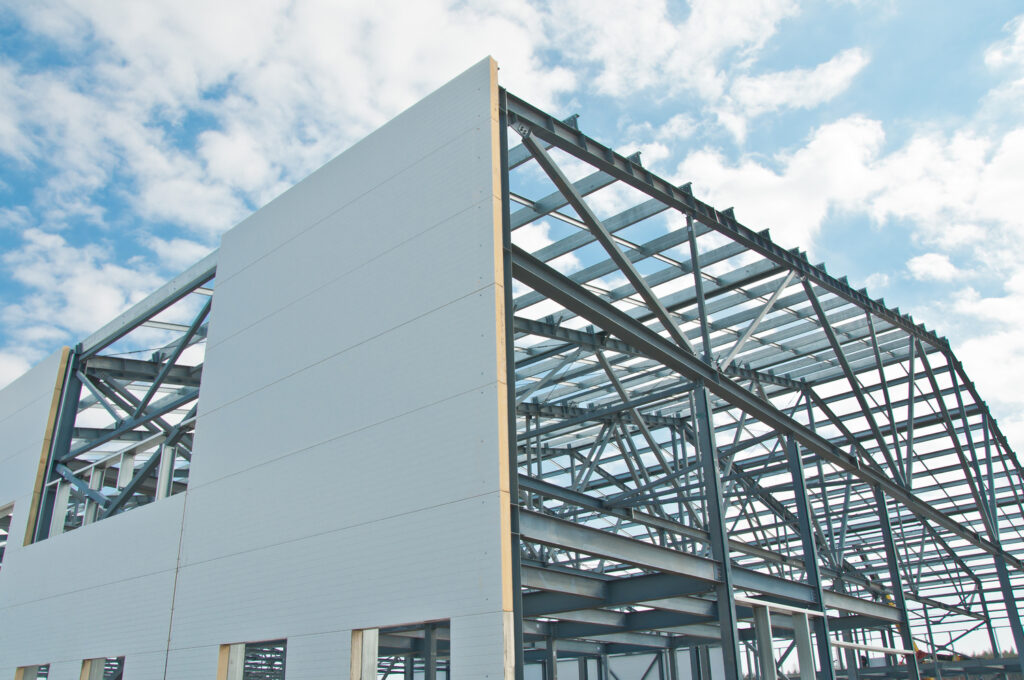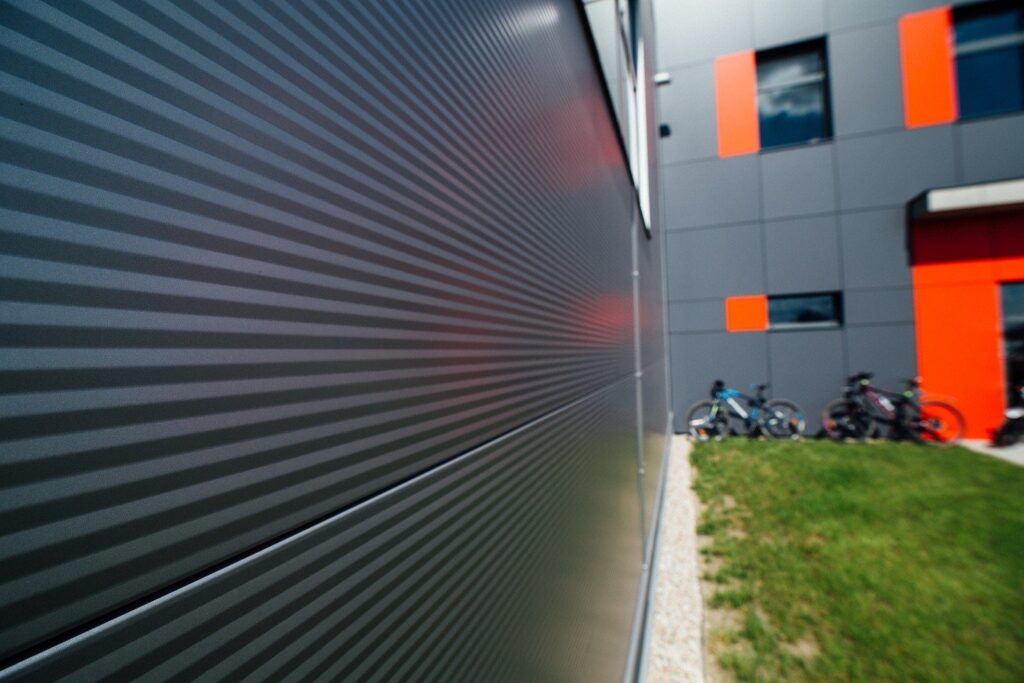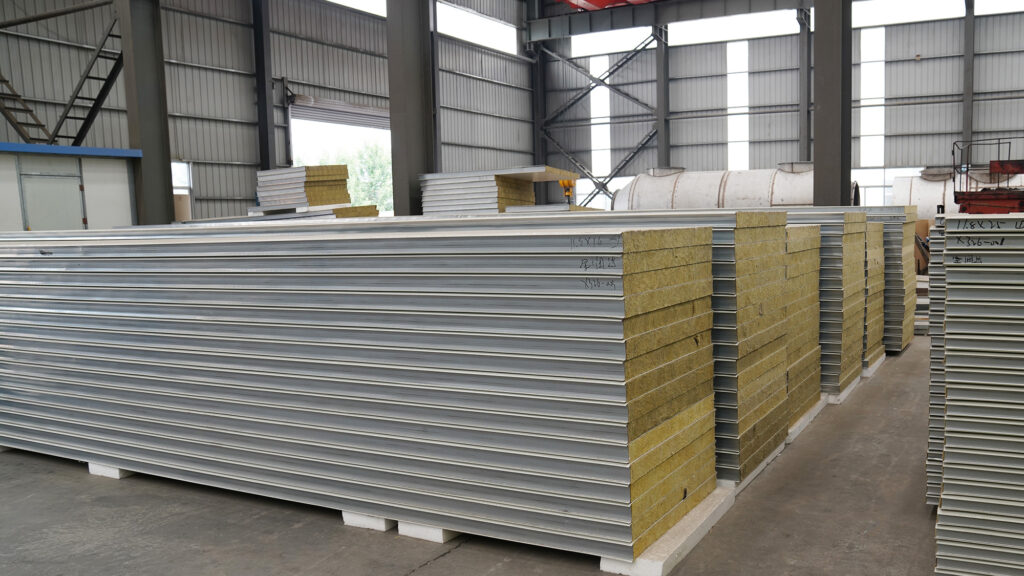The sandwich panel wall has become a popular choice in modern construction. It combines strength, insulation, and beauty in one structure. Many industrial and commercial buildings now use it. The design of a sandwich panel wall is simple yet effective. It consists of two outer metal sheets and a core insulation layer. This structure gives it excellent mechanical and thermal properties.
Builders use sandwich panel walls for warehouses, cold rooms, factories, and offices. They save time during installation and reduce project costs. The use of advanced materials also ensures long service life. With proper design and production, these panels provide both function and aesthetics.
However, manufacturers must control every detail during production. Material selection, adhesive quality, and surface treatment all affect performance. Understanding the advantages and the key points in manufacturing helps improve the final product.
Lightweight and High Strength
A sandwich panel wall offers a unique balance between lightness and strength. The metal outer layers provide strong structural support. The inner insulation core reduces the overall weight. This design allows easy transportation and quick installation on-site. Workers can handle large panels without heavy equipment.
Despite being lightweight, sandwich panels have great load-bearing capacity. The bonding between the metal sheets and the core creates strong structural integrity. This strength helps buildings resist wind pressure and impact. It also improves stability and reduces deformation over time.
The combination of low weight and high strength helps engineers design flexible structures. They can reduce foundation loads and steel consumption. As a result, construction becomes more efficient and cost-effective.
Excellent Thermal Insulation

Energy saving is a major advantage of sandwich panel wall. The insulation core, often made of polyurethane, polystyrene, or rock wool, blocks heat transfer. It keeps indoor temperatures stable and reduces energy loss. This makes the panels ideal for buildings requiring temperature control.
In cold climates, sandwich panels prevent heat escape. In hot areas, they keep interiors cool. This feature helps reduce heating and cooling costs. The thermal performance also supports environmental goals by lowering carbon emissions.
The choice of core material affects insulation efficiency. Polyurethane foam offers high thermal resistance. Rock wool provides both insulation and fire protection. Manufacturers must select the right material based on climate and building use. Proper sealing between panels ensures no air leakage, maintaining energy performance.
Sound Insulation and Fire Resistance
Sandwich panel walls also offer good sound insulation. The dense core layer absorbs sound waves effectively. This creates quieter indoor environments in factories, offices, or residential areas. Reducing noise improves comfort and productivity.
Fire resistance is another strong advantage. Rock wool and certain polyurethane cores can resist high temperatures. The metal surface prevents flame spread and adds protection. Many sandwich panels meet national fire safety standards. This makes them suitable for buildings that require strict fire control.
During production, ensuring proper bonding between layers is important. Poor adhesion can reduce both sound and fire performance. Manufacturers must test each batch to meet safety requirements.
Fast Installation and Cost Efficiency
The modular design of sandwich panel walls makes construction faster. Each panel is prefabricated to exact dimensions. Workers only need to assemble them with screws or hooks on-site. This reduces labor costs and shortens project time.

Compared with traditional walls, sandwich panels need fewer supporting materials. There is no need for extra insulation layers or finishing work. The smooth metal surface often requires no additional painting. This saves both time and money.
Maintenance costs are also low. The durable materials resist corrosion and wear. Cleaning is easy with water and mild detergent. Over the building’s life cycle, sandwich panel walls offer great cost efficiency.
Attractive Appearance and Design Flexibility
Modern buildings demand both function and beauty. Sandwich panel walls meet these needs. The metal surfaces come in various colors, textures, and finishes. They can match many architectural styles, from industrial to modern commercial buildings.
Designers can choose panels with different profiles, such as flat, ribbed, or corrugated. These options add depth and visual appeal. Panels can also be installed vertically or horizontally, depending on design needs.
The flexibility of sandwich panel walls allows creative architectural expressions. They are used in factories, showrooms, offices, and shopping centers. The uniform appearance improves the building’s visual quality while maintaining performance.
Durability and Environmental Benefits
Durability is one of the key advantages of sandwich panel walls. The metal surfaces resist corrosion, moisture, and UV rays. The core materials maintain their insulation and structural properties for decades. This ensures long service life even in harsh conditions.
The materials are also environmentally friendly. Most metal sheets are recyclable. Energy-efficient insulation reduces building energy consumption. This supports sustainable development and green building standards.
Manufacturers can further reduce environmental impact by using eco-friendly foams. These materials contain fewer harmful gases and chemicals. Proper production management minimizes waste and promotes recycling.
Key Points in Manufacturing
High-quality sandwich panel walls require precise manufacturing. The first step is material selection. The metal sheets must have high strength, corrosion resistance, and good surface finish. Common choices include galvanized steel, aluminum, and color-coated steel. The core material must meet insulation and fire resistance needs.
The second step is surface treatment. Metal sheets should receive anti-corrosion coating before assembly. This improves adhesion and extends service life. Any dust or oil on the surface must be removed before bonding.

The third step is adhesive quality. The adhesive connects the metal sheets to the core layer. It must resist temperature changes and humidity. Poor bonding can cause delamination and reduce performance. Manufacturers should use reliable adhesives and maintain proper curing conditions.
The fourth step is precision in lamination. The pressure and temperature during lamination must be uniform. Uneven bonding leads to defects. Automated production lines help control these parameters accurately.
The fifth step is quality inspection. Each finished panel must pass tests for thickness, strength, insulation, and adhesion. Regular sampling ensures consistency. Panels that fail standards should not reach the market.
Installation and Maintenance Considerations
Even high-quality panels need proper installation to perform well. Workers must align panels accurately to avoid gaps. All joints should be sealed with suitable sealant. Improper installation can lead to heat loss and water leakage.
Fixing systems should be compatible with panel materials. Screws and accessories must resist corrosion. Expansion joints should allow for thermal movement. Incorrect installation may damage the panels or reduce insulation.
Maintenance is simple but necessary. Regular cleaning prevents dust and chemical buildup. Inspections should check for corrosion or joint damage. Prompt repair extends the life of the wall system. With proper care, sandwich panel walls can last more than 30 years.
Future Development Trends
The demand for sandwich panel walls continues to grow. Energy-efficient and fast-building technologies drive this trend. New materials and production methods are also emerging.
Manufacturers are developing panels with better fire and thermal performance. Nanotechnology and new foam formulations help achieve this. Digital design tools allow precise customization. Automation in production ensures consistent quality.
In the future, more panels will use eco-friendly and recyclable materials. Lightweight but stronger designs will dominate the market. Integration with solar panels and smart systems may also appear. These innovations will make sandwich panel walls even more sustainable and efficient.
Post time: Oct-24-2025

